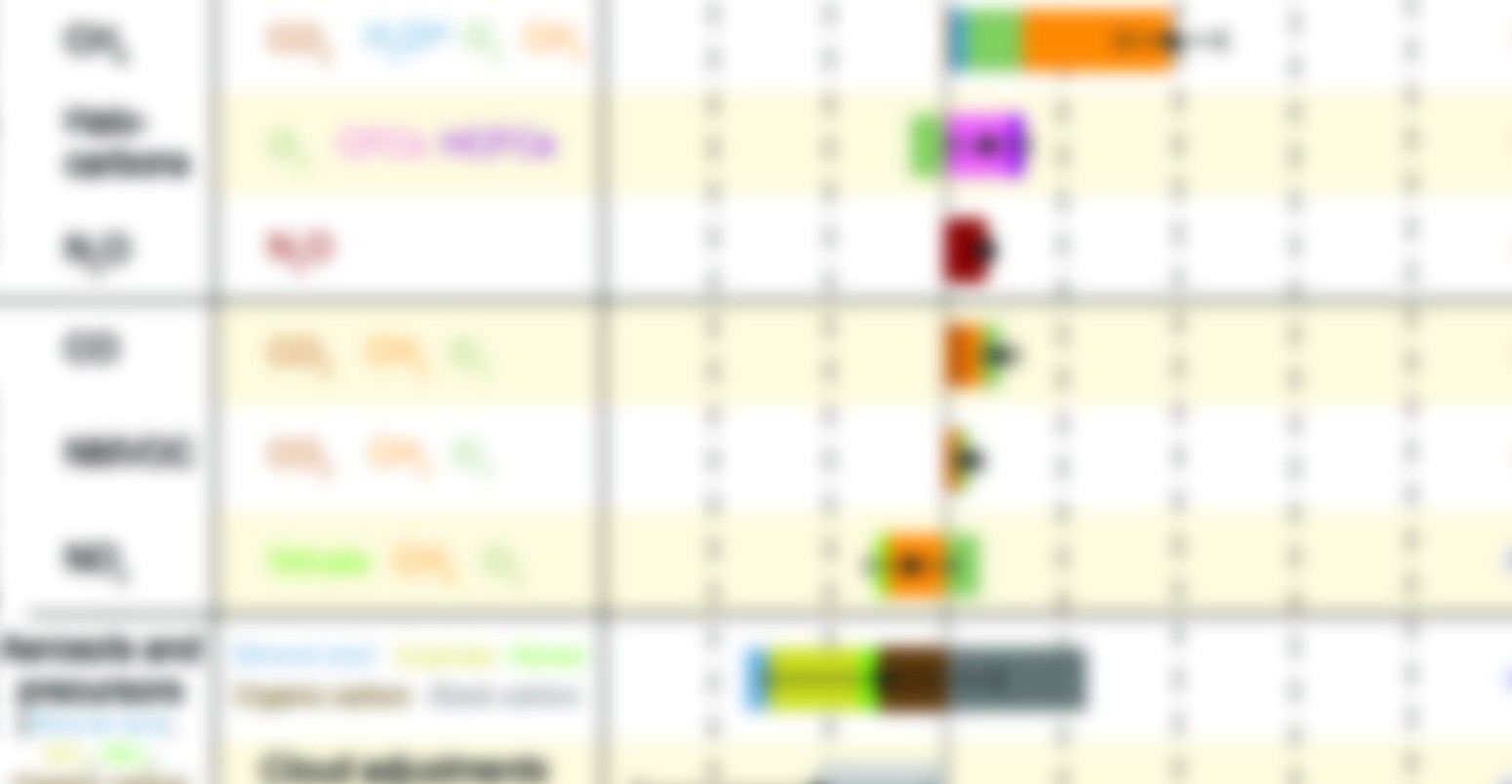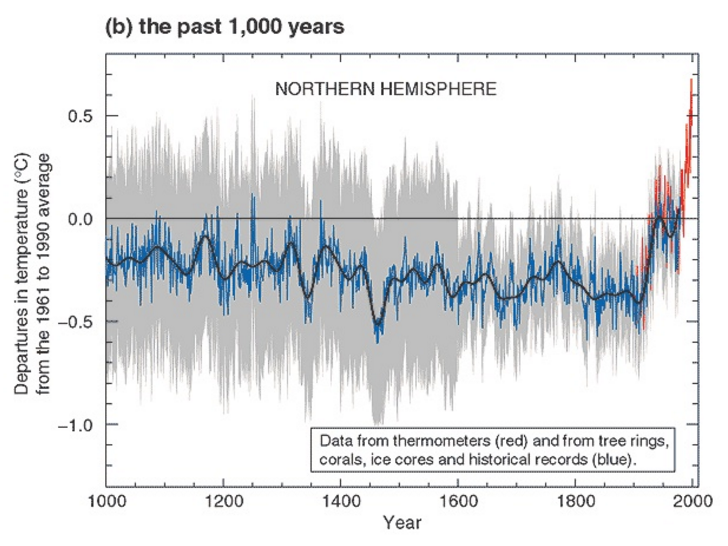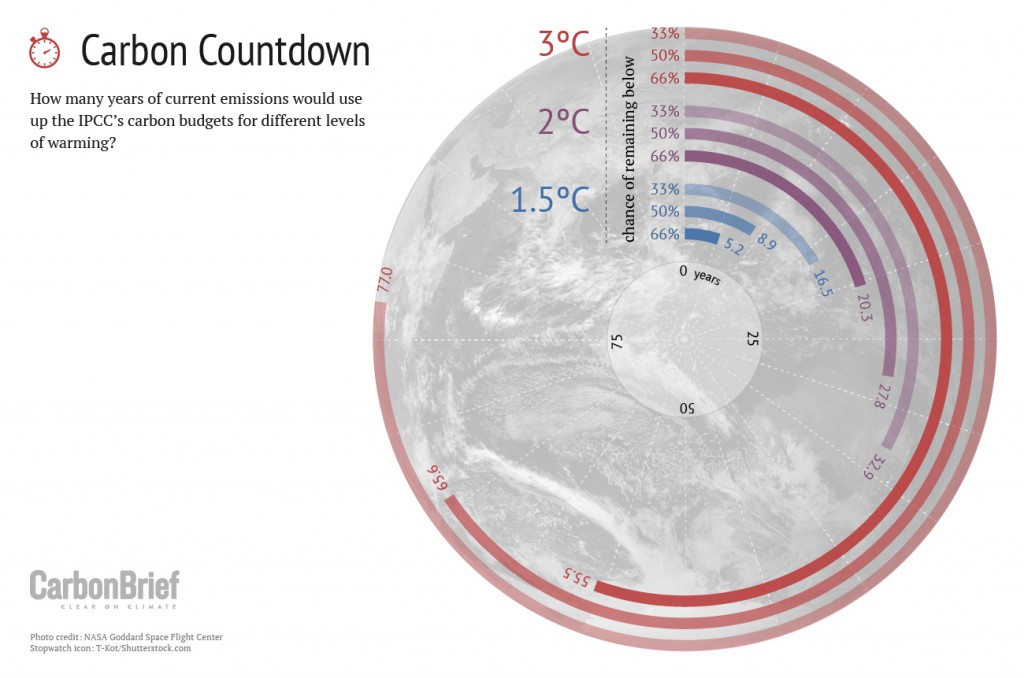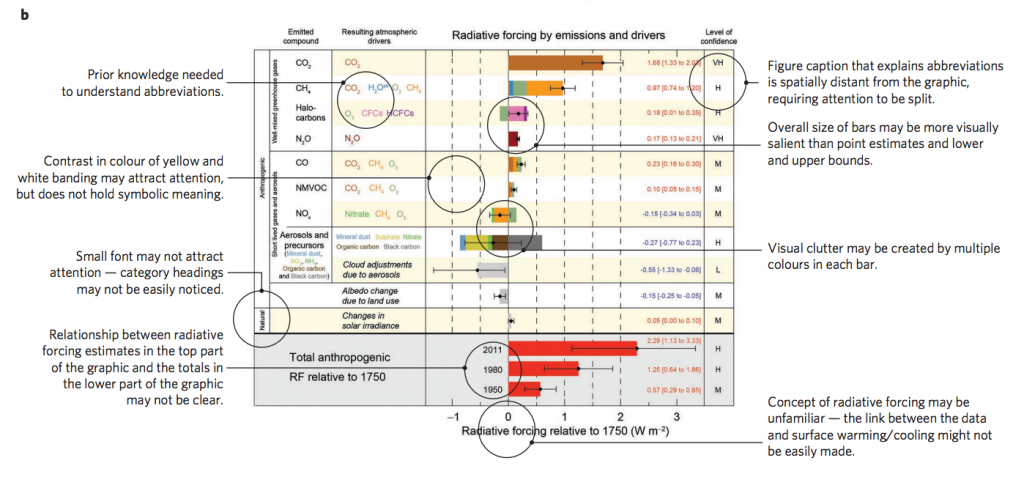
Six tips for creating a good climate change graphic
Roz Pidcock
11.28.16Can you make a simple, eye-catching graphic about climate change without compromising on the science? This is a question climate scientists often grapple with.
A group of scientists from Philadelphia in the US and the University of East Anglia say in a new Nature paper that it can be done. Using evidence about how the brain processes and creates meaning from visual information, the researchers explain the evidence behind what makes a good climate change graphic. They also, helpfully, offer some guidelines for scientists on how to go about doing it themselves.
Draw the eye where you want it to go
When looking at a graphic, we use our central vision. Afforded by the fovea centralis, this gives better visual acuity than our peripheral vision, the paper explains:
When viewing an image from a distance of 60cm (such as on a computer screen at about an arm’s length), our central vision covers and area approximately 2cm wide)
At any one time, our central vision can only focus on one location. Sensory processes draw the eye to specific features around the graphic. Limited cognitive resources mean that we can process only a fraction of the visual information entering our eyes at any given point in time. The paper explains:
If important details are not captured by our attention, they will not be processed by the brain.
Use different shapes and size, as well as colour and motion, to direct visual attention towards bits of the graphic that will do most to help the reader understand, the paper suggests.
Use visual cues, but be selective
Visual indicators, such as arrows, can be a useful tool in emphasising meaning, say the authors:
Arrows are the symbolic visual equivalent of pointing gestures, which have a widely-accepted meaning of ‘look here’ and are thought to direct attention automatically.
But be careful not to use arrows for more than one purpose in the same graphic, namely, for denoting motion and the passing of time, the authors warn.

Northern Hemisphere temperature change estimated from proxy records (blue) and from instrumental data (red). Source: IPCC Third Assessment Report, Mann et al., (1999)
Simplify and declutter
Humans have a limited and selective visual attention span so get rid of anything of anything else unnecessary for the point you’re making, suggest the authors.
Things that make graphics visually complex include the number of variables and data points, and how well the data is organised to emphasise relationships. Some of this complexity is unavoidable to retain scientific integrity, but it’s worth removing extra “visual clutter” where possible. Extra visual material is unlikely to be looked at and will make it harder for the brain to create meaning from what it is seeing. Another tip the authors give is to break the graphic down into visual “chunks”, creating a journey through the graphic, without overloading with information.
The authors highlight the iconic “hockey stick” graph (above) as an example of a graphic the brain can easily process, that is easy to understand and that sticks in the memory.
Use familiar concepts
Using natural or cultural metaphors can help aid understanding of climate change graphics, suggest the authors. The paper says:
Financial concepts are used metaphorically in speech with regards to limiting carbon emissions, that is, having a carbon budget.

Carbon Countdown: How many years of current emissions would use up the IPCC’s carbon budgets for different levels of warming? Infographic by Rosamund Pearce for Carbon Brief.
Metaphors can differ across cultures so the choice should be tailored to the audience, the paper warns.
Intersperse text and graphics, don’t separate them
Captions accompanying graphics usually provide contextual information, but the relevance of the graphic and the inferences that should be drawn from it are usually separate in the main body of the text. This comes with a cognitive cost, the paper explains:
Where there is distance between the spatial locations of the text and the corresponding graphic, attention must be split between the two.
Embedding text within graphics, or vice versa, means a reader can make connections more easily, resulting in improved understanding, say the authors.
Don’t make assumptions, always test
What we, intuitively, think is a well-designed graphic doesn’t always match up to the evidence of what actually works. The paper explains:
For example, some experts, as well as non-experts, show preferences for graphic features that can actually impair comprehension, such as realistic features [and] 3D features.
There’s no substitute for testing, the authors add. While general principles are shared by everyone, specific factors that affect comprehension can differ between audience groups, such as colour-blindness and the native language of the reader. In Arabic, for example, a reader reads text from right to left, so the visual order in the graphic should match, say the authors. The paper says:
[These guidelines] provide a useful reference for climate scientists to apply psychological and cognitive insight when creating graphics…However, as individuals and groups can differ, there is no substitute for empirically testing graphics with the target audience.
An IPCC case study
One organisation that’s been criticised for being largely inaccessible to non-specialist audiences is the Intergovernmental Panel on Climate Change (IPCC), the United Nations body tasked with assessing the science on climate change.
A number of studies have looked at how to improve the wording of the IPCC reports. But the graphics need just as much attention, says the new study.
Following their own guidelines, the scientists redesigned a graphic from the last IPCC report showing how much impact humans have had on the climate compared to natural forces.
The graphic is an important one, but it was identified by IPCC scientists that the authors spoke to as “potentially challenging” for an non-specialist reader to understand.
Below is the original IPCC image with the authors’ comments overlaid.

IPCC figure from the Working Group 1 Summary for Policymakers of the Fifth Assessment Report. The authors highlight aspects that might limit how easily understandable it is to non-specialists. Source: Harold et al. (2016)
The new, more accessible version of the graphic, below, retains the scientific integrity, but makes the following improvements:
- Gives the meaning of all abbreviations.
- Breaks down information into “chunks” to reduce complexity and clutter.
- Uses larger fonts for headings, relative to other text, to attract attention.
- Uses contrast in colour to distinguish between human and natural factors.
- Integrates the caption text within the graphic to reduce the need for splitting attention.
- Uses colour as a metaphor to support understanding of the link between the data and surface warming or cooling.

A version of the IPCC figure from the Working Group 1 Summary for Policymakers of the Fifth Assessment Report where the authors have applied their own guidelines to improve accessibility. Source: Harold et al. (2016).
When the researchers tested the new version on 10 climate change researchers and 10 other experts, 80% said they preferred it to the original.
The authors highlight the potential for the IPCC to develop graphics that are easier to understand in future. The paper says:
This goal in particular aligns with the IPCC’s desire to make outputs of future reports more accessible and user-friendly to diverse audiences.
The IPCC held a two-day meeting in Oslo in February 2016 to discuss how to make its findings more accessible to policymakers, the media and the public. Among the outcomes was the intention to involve communications specialists early in the drafting process to improve the readability of the reports.
Looking ahead to the IPCC’s sixth assessment report, due in 2020/21, it could even “open up” the review process to the psychology and cognitive science communities, suggest the authors, to ask for feedback on drafts of the graphics in the summary for policymakers – the most policy relevant part.
Harold, J. et al., (2016) Cognitive and psychological science insights to improve climate change data visualization. Nature Climate Change. Doi: 10.1038/nclimate3162

